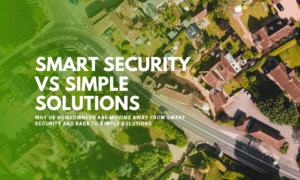Are you ready to unlock the power of artificial intelligence in securing remote education? In the age of virtual classrooms and online exams, ensuring academic integrity has become a paramount concern. But fear not! With AI-powered exam proctoring, educational institutions can now confidently thwart cheating attempts while embracing the convenience and flexibility of distance learning. Join us as we delve into this groundbreaking technology that is revolutionizing remote education and discover how it can safeguard the integrity of examinations like never before.
Introduction to Exam Proctoring and Security
Exam proctoring is the process of administering and supervising examinations to ensure the integrity of the testing process. Proctors are responsible for ensuring the security of the exam environment and the fairness of the administration of the exam.
There are a number of different ways to proctor an exam, but all proctors must be able to maintain a secure testing environment and prevent cheating. The use of artificial intelligence in exam proctoring can help to create a more secure and fair testing environment by providing automated monitoring and identification of potential cheating behavior.
AI-based exam proctoring solutions can monitor exams in real-time and identify patterns of behavior that may indicate cheating. These solutions can also provide live streaming of the exam session to a remote proctor who can provide live monitoring and intervention if necessary. AI-based solutions can also be used to flag potential cheating behavior after the fact for review by a human proctor.
The use of AI in exam proctoring can help to create a more secure and fair testing environment by providing automated monitoring and identification of potential cheating behavior.
The Need for Remote Exam Security
As the world continues to grapple with the Covid-19 pandemic, remote learning has become the new normal for many students. While this shift has presented some challenges, it has also opened up new opportunities for educators to leverage technology in innovative ways.
One area where this is particularly evident is in the realm of exam proctoring. In a traditional classroom setting, exams are typically proctored in person by a teacher or other designated adult. However, with remote learning, students take their exams on their own computers, often in their own homes. This presents a unique challenge when it comes to ensuring the integrity of the exam process.
Fortunately, there are a number of different tools and techniques that can be used to secure remote exams. One promising solution is the use of artificial intelligence (AI) in exam proctoring. AI-based systems can monitor students during an exam and flag any suspicious behavior that may indicate cheating. This allows educators to quickly identify and address any potential issues before they become a problem.
While AI-based solutions are not perfect, they represent a powerful tool that can help ensure the security of remote exams. As we continue to adapt to the new reality of remote learning, it is important that we explore all available options for securing our educational process.
Benefits of AI in Exam Proctoring
There are many benefits of using AI in exam proctoring. Perhaps the most obvious benefit is that it can help to secure remote education by deterring cheating and preventing academic dishonesty. In addition, AI can also help to improve the efficiency and accuracy of exams by automating the grading process and providing detailed feedback to students.
AI can also help create a more level playing field for students by reducing the need for in-person proctoring, which can often be biased or unfair. AI-based exam proctoring can also help save time and money for both educators and students by reducing or eliminating the need for expensive physical proctoring facilities.
Types of AI Technologies Used in Exam Proctoring
There are many different types of AI technologies that can be used in exam proctoring. Some of the most common ones are facial recognition, motion tracking, and natural language processing.
Facial recognition technology can be used to identify a person by their face. It is often used in security systems and can be employed to track people’s movements during an exam.
Motion tracking technology can monitor a student’s movements during an exam to identify any suspicious behavior that may indicate cheating. It can detect actions such as looking away from the screen or having multiple people in the room.
Natural language processing technology can analyze a student’s written responses to identify any patterns or indications of plagiarism. It can help flag suspicious or copied content in real-time.
Challenges with AI in Exam Proctoring
AI has the potential to revolutionize exam proctoring, but there are still some challenges that need to be overcome. One challenge is that AI-based systems must be carefully designed and calibrated to ensure fairness and avoid bias.
Another challenge is the need for robust data protection and privacy measures. As AI systems process and analyze sensitive student data, it is essential to implement stringent security protocols to protect the privacy and confidentiality of students’ information.
Best Practices for Implementing AI Technology in Exam Proctoring
There is no one-size-fits-all answer when it comes to the best practices for implementing AI technology in exam proctoring. However, there are a few best practices that can help ensure a smooth and successful implementation:
Work with experienced vendors: When looking for an AI proctoring solution, it is important to partner with a vendor who has extensive experience and expertise in the field. This will help ensure that you are getting a high-quality and reliable product.
Do your research: It is important to do your research and understand the different AI proctoring solutions on the market before making a decision. Be sure to read reviews and compare features to find the right solution for your needs.
Implement a pilot program: Once you have selected an AI proctoring solution, it is important to implement a pilot program before rolling it out to all students. This will help you work out any kinks and ensure that the system is working properly before putting it into use for all exams.
Communicate with students: Be sure to communicate clearly with students about the AI proctoring solution that you are using and how it will be used during exams. This will help ensure that they are comfortable with the process and know what to expect.
Conclusion
In conclusion, the potential of AI in exam proctoring is vast and can help to secure remote education for students all over the world. By leveraging existing technology such as facial recognition, motion tracking, and natural language processing, AI-powered exam proctoring solutions can monitor student behavior to detect cheating. This will ensure that exams are conducted fairly and securely while also allowing educators to focus more on teaching than monitoring during online exams.

































